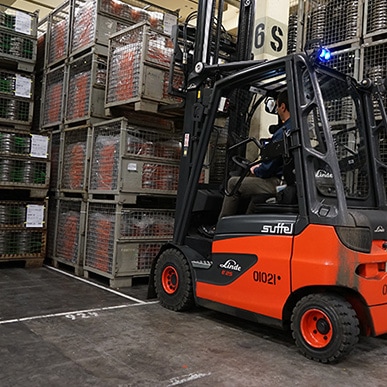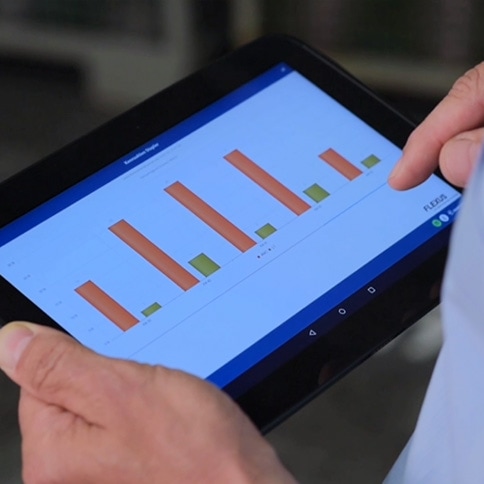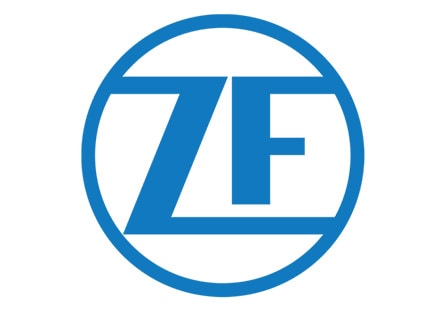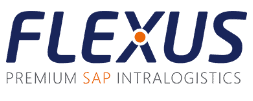Forklift Guidance System optimizes SAP production
ZF is reshaping – Forklift guidance system handletorques material flow control at one of the company’s largest sites with over 8,000 employees. In Schweinfurt, ZF Friedrichshafen AG controls the material storage and transport in the area of forming technology with software solutions by Flexus AG.
“Flexus is one of the market leaders in this field and, with the FlexGuide Transport/ Forklift Guidance Sys- tem, was able to offer us a solution that is already integrated directly
into SAP.”
Kai Schlösser
Head of Logistics
Forming technology
ZF Friedrichshafen AG
Housing washers, cover plates, hub washers and spring washers: these and many other sheet metal and solid parts are punched and pressed on around 30 machines at the plant of ZF Friedrichshafen AG in Schweinfurt. They are then processed into torque con- verters, clutches and other drive modules. Around 500 tons of steel are processed in three work shifts in the area of sheet metal forming alone. The material flow required for this is guaran- teed by a fleet of front end loader forklifts, which is now controlled by a forklift guidance system.
Tobias Schubert, who works for ZF in the department of change management, recalls: “In the past, each production area used to have its own forklift trucks which were used on a decentralized basis”.
In the course of restructuring, all non-value-adding activities of the individual production departments in the logistics area were then grouped together. This is why the central fleet of forklift trucks and the need for a forklift guidance system arose.
Like an open-heart surgery
Prior to its introduction, however, the entire mate- rials-handling technology in the area of forming technology was put to the test at ZF. Instead of using front end loader forklifts, we also considered the use of route trains with a milk run system,” reports Kai Schlösser, who is responsible for logistics in the forming technology sector. However, the demand-oriented production of around 3,000 articles with a wide variety of tools and up to 10 processing steps does not allow for a regular time- table.

Given this background, route trains were out of question. “We can only achieve the required flexi- bility in the supply and disposal of production with front end loader forklifts,” says Schlösser.
In his search for a proper forklift guidance system, the manufac- turer of stamped and formed parts for drive and chassis technology quickly became aware of Flexus AG in Würzburg. “Flexus is one of the market leaders in this field and, with the FlexGuide Transport/Forklift Guidance System, was able to offer us a solution that is already integrated directly into SAP,” says Schlösser.
Against this background, tugger trains were out of the question. “We can only realize the required flexibility in the supply and disposal of production with front-end stackers,” Schlösser notes. In its search for a suitable forklift guidance system, the manufacturer of stamped and formed parts for drive and chassis technology quickly became aware of Würzburg-based Flexus AG.
50% saved
The new solution dictates that forklifts are requested by transport order. It is automatically generated by
the forklift guidance system as soon as an employee reports the completion of a production order or the need for packaging material for the liners in the lattice boxes via SAP. The FlexGuide knows the current work- load of all forklifts and assigns the new order to the nearest vehicle in an optimized way based on various priorities and algorithms.
The forklifts are equipped with a forklift terminal that contains a large touch screen, enabling the drivers to call up all information on upcoming orders and confirm completed transports. In this way, empty runs can be avoided almost completely, which leads to a very good record: Due to the centralization and the FlexGuide, the number of forklifts could be reduced from 13 to only 7. With a growing number of transport orders and transport quantities, this corresponds to a saving of more than 50%.
Integrated WIP-Warehouse
At ZF, however, due to complex production steps and varying machine utilization rates, internal trans- ports usually do not lead directly to the next pro- duction stage, but almost always to a buffer inven- tory. The so-called work-in-process warehouse, WIP for short, was created at the time of the change- over of the forklift fleet. It replaces various small buffer storages in the production areas and makes the storage areas noticeably more compact: “Thanks to the disorganized central WIP warehouse, we were able to reduce the space required for semi-finished products by 15 percent,” emphasizes Peter Metz, who is responsible for the WIP warehouse. Whereas the former decentralised buffer storages used to be managed manually with FiFo boards, the central WIP warehouse with over 3,000 different articles required computer-aided management.
“We needed a warehouse management system with its own logic for the storage, transfer and retrieval of goods,” explains Timo Henz, who is employed at ZF as a logistics planner. The SAP system installed at ZF was not able to meet these requirements, which is why the company opted for an SAP add-on by Flexus.
Minimized search times
The Würzburg-based SAP® specialists have devel- oped the software FlexWIP Warehouse Management for this case of application. This makes it possible to store and retrieve material that is not yet managed as stock in SAP.
The unambiguous assignment of the material to the production order and the respec- tive processing stage is therefore always guaranteed. The solution is based on mobile applications, which can be used independently of terminal devices both on Portable Data Collection Terminals (“PDTs”) as well as on forklift terminals. At ZF, FlexWIP not only complements the SAP enterprise resource plan- ning system, but also the FlexGuide Forklift Guidance System. The solution recognizes whether a lattice box must be transported into the WIP warehouse, out of the WIP warehouse or directly from the machine to the next production stage. The FlexWIP warehouse management system makes inventory management within the WIP warehouse transparent. Additionally, the current position of the materials can be determined at any time.

In conclusion
With the solutions provided by Flexus, ZF was able to increase efficiency decisively. Search times in the WIP warehouse could be minimized as well as the need for storage spaces, forklifts and their empty runs. In a later expansion stage, the SAP WM Warehouse (Warehouse Management) will be inte- grated into the FlexGuide in order to receive customer orders on the forklift truck in real time as a transport order. All stock postings are then made automatically in the background.. Forming technology at the location in Schweinfurt was only the first pilot, and in the future the FlexGuide Transport/Forklift Guidance System will there- fore be rolled out in other ZF production areas and loca- tions as well.

ZF is a technology group that is a leading global player in driveline and chassis technology as well as in active and passive safety technology. The company operates with 137,000 employees at 230 locations in 40 countries. In 2016, ZF achieved a revenue amounting to €35bn. ZF is one of the world’s largest automotive suppliers. ZF is one of the world’s largest automotive suppliers.
